Georgian Baccante Lava Cameo Brooch
Georgian Baccante Lava Cameo Brooch
$1,100.00
Description
DATE: Georgian, c.1820
A cool Georgian lava cameo brooch dating from the early 19th century, circa 1820. The subject is a Baccante with characteristic ivy leaves worn in the hair (also confirmed by an inscription on the back of the cameo). Carved from a single piece of gray/green Mount Vesuvius lava, it will have been brought back by a Grand Tourer to commemorate (presumably suitably hedonistic) time spent in Rome. The detail is excellent, carved in particularly high relief, and given the relatively delicate medium it's survived in fantastic condition - collet-set in a simple 15k gold mount.
Baccanti (aka Bassarids, Bacchae, Bacchantes, or in the Greek tradition Maenads) were followers of Bacchus (or Dionysus in Greek). Often portrayed in a state of ecstatic frenzy through a combination of dancing and wine, dressed in fawn skins and carrying thyrsi - a long stick wrapped in ivy vines and leaves, and topped with either a pine cone or bunch of grapes and vine leaves, associated with Bacchus and his followers. The thyrsus is not only a potent symbol of prosperity, fertility, hedonism, and general pleasure, but,, according to Diodorus, Bacchus converted the thyrsi he and his followers carried into weapons, concealing an iron point in the head of the leaves. Ovid described such thyrsi as "spear[s] enveloped in vine-leaves" and the point was said to incite madness.
The Bacchanalia was the main rite associated with the worship of Bacchus, god of wine. These revelries were characterised by maniacal dancing to crashing symbols and music played as loud as possible. The Baccanti screamed, writhed, whirled, and imbibed, frantically trying to achieve such an extreme state of ecstasy that their souls were temporarily freed from the earthly bodies enabling direct commune with Bacchus himself; a tantalising glimpse of what they would go on to experience in eternity.
In his 1965 book Dionysus: Myth and Cult, German philologist Walter Friedrich Otto writes a wonderfully evocative overview of Eurpipdes' play The Bacchae:
"The Bacchae of Euripides gives us the most vital picture of the wonderful circumstance in which, as Plato says in the Ion, the god-intoxicated celebrants draw milk and honey from the streams. They strike rocks with the thyrsus, and water gushes forth. They lower the thyrsus to the earth, and a spring of wine bubbles up. If they want milk, they scratch up the ground with their fingers and draw up the milky fluid. Honey trickles down from the thyrsus made of the wood of the ivy, they gird themselves with snakes and give suck to fawns and wolf cubs as if they were infants at the breast. Fire does not burn them. No weapon of iron can wound them, and the snakes harmlessly lick up the sweat from their heated cheeks. Fierce bulls fall to the ground, victims to numberless, tearing female hands, and sturdy trees are torn up by the roots with their combined efforts."
STONES
Lava Cameo
MEASUREMENTS
2.8 x 2.3cm
WEIGHT
5.2g
MARKS
No marks present, tests as 15k gold
CONDITION
Very good, a couple of minor chips to the edges of the stone





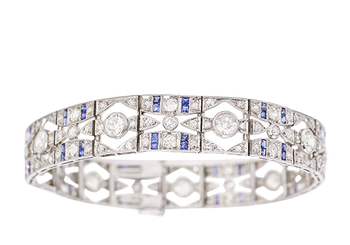

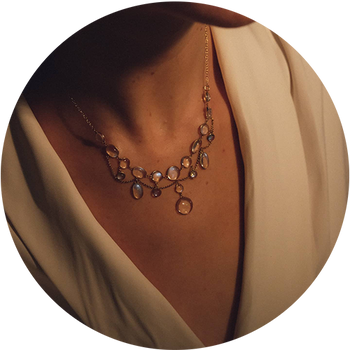







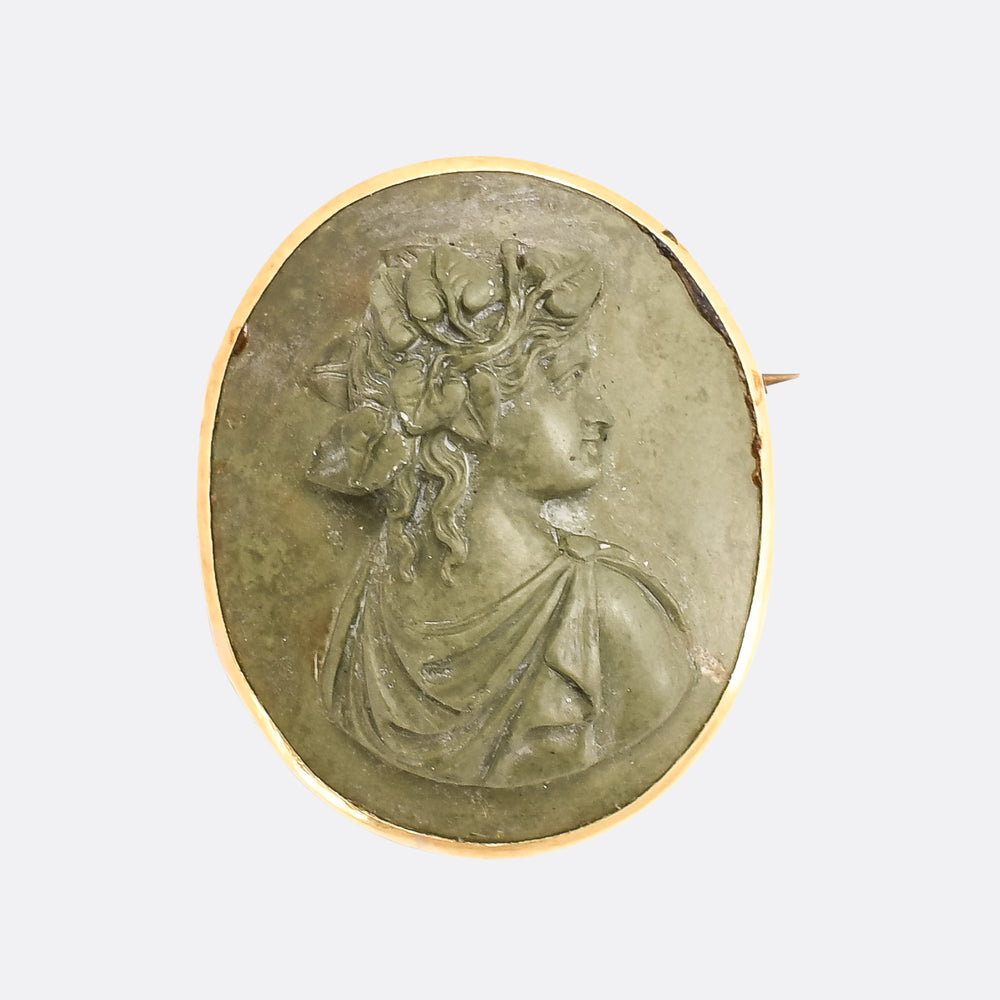

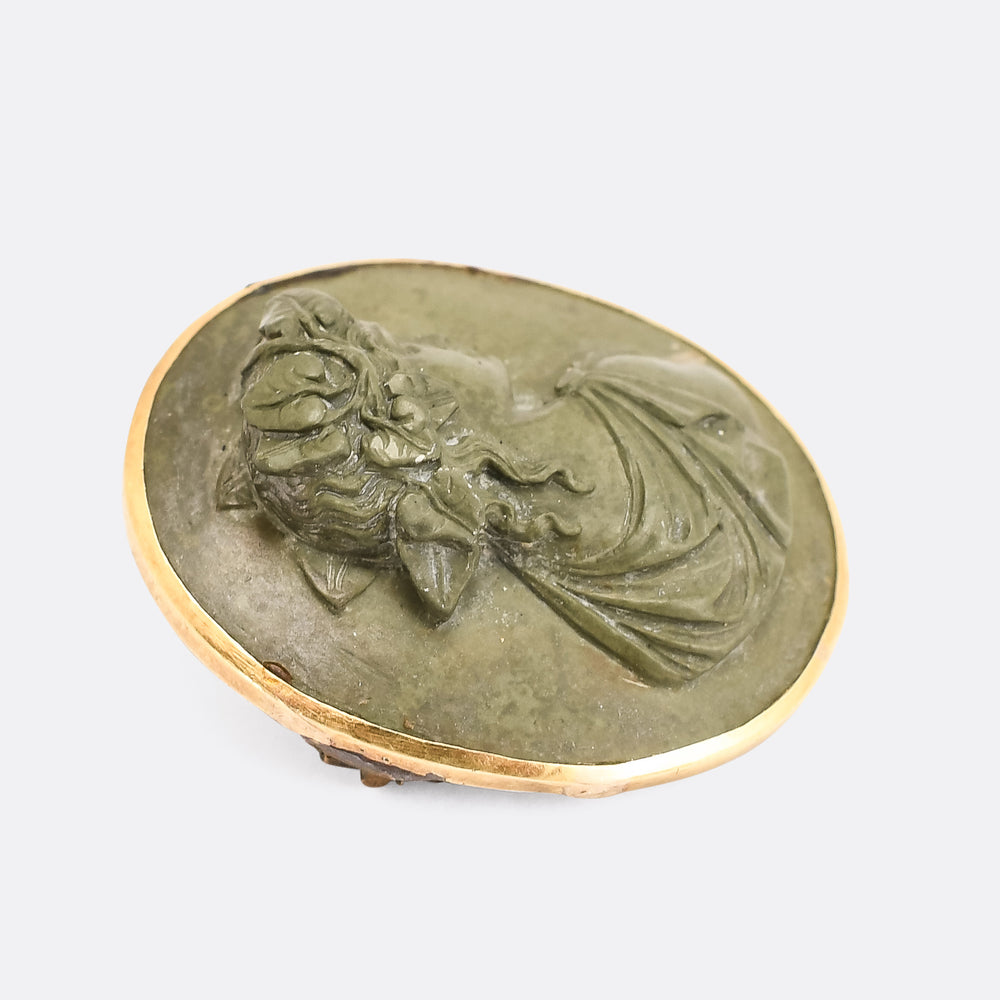

















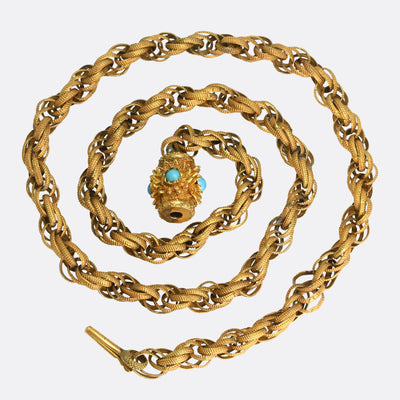




























Follow Us
Dealing Podcast blog instagram TikTok facebook